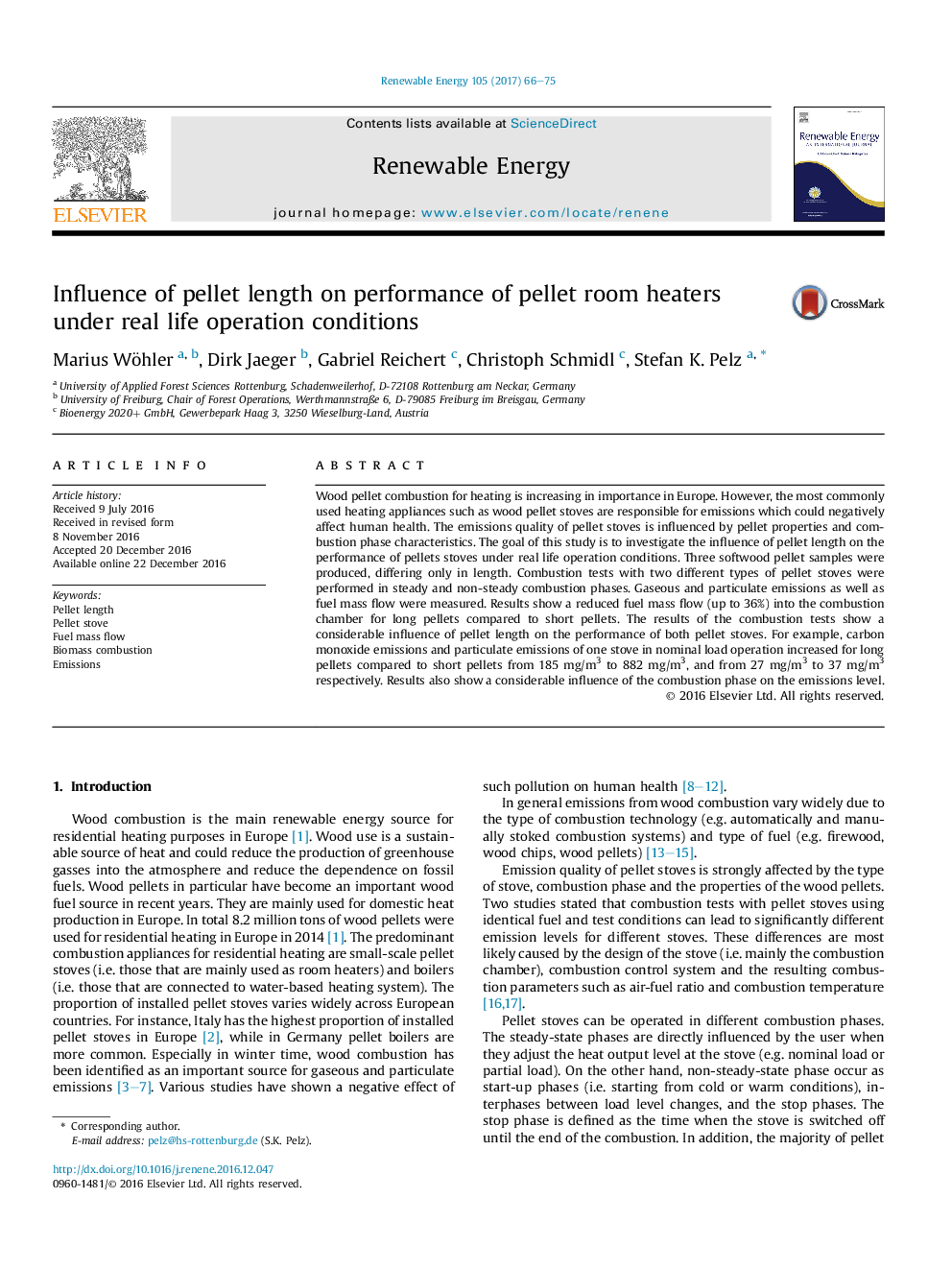| Article ID | Journal | Published Year | Pages | File Type |
|---|---|---|---|---|
| 4926417 | Renewable Energy | 2017 | 10 Pages |
Abstract
Wood pellet combustion for heating is increasing in importance in Europe. However, the most commonly used heating appliances such as wood pellet stoves are responsible for emissions which could negatively affect human health. The emissions quality of pellet stoves is influenced by pellet properties and combustion phase characteristics. The goal of this study is to investigate the influence of pellet length on the performance of pellets stoves under real life operation conditions. Three softwood pellet samples were produced, differing only in length. Combustion tests with two different types of pellet stoves were performed in steady and non-steady combustion phases. Gaseous and particulate emissions as well as fuel mass flow were measured. Results show a reduced fuel mass flow (up to 36%) into the combustion chamber for long pellets compared to short pellets. The results of the combustion tests show a considerable influence of pellet length on the performance of both pellet stoves. For example, carbon monoxide emissions and particulate emissions of one stove in nominal load operation increased for long pellets compared to short pellets from 185Â mg/m3 to 882Â mg/m3, and from 27Â mg/m3 to 37Â mg/m3 respectively. Results also show a considerable influence of the combustion phase on the emissions level.
Related Topics
Physical Sciences and Engineering
Energy
Renewable Energy, Sustainability and the Environment
Authors
Marius Wöhler, Dirk Jaeger, Gabriel Reichert, Christoph Schmidl, Stefan K. Pelz,
